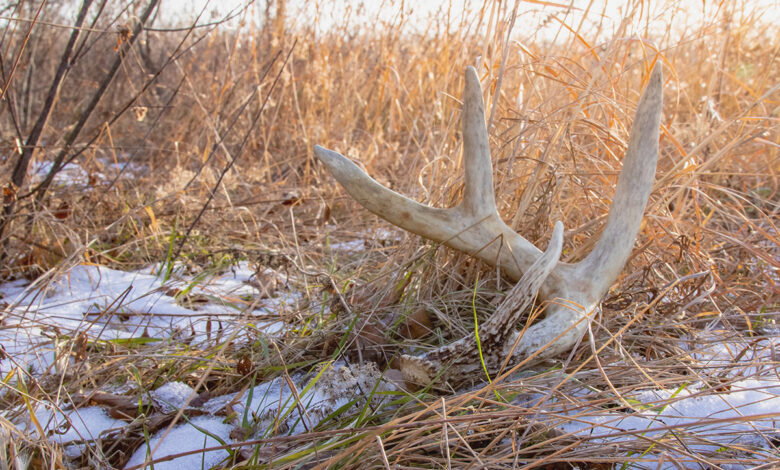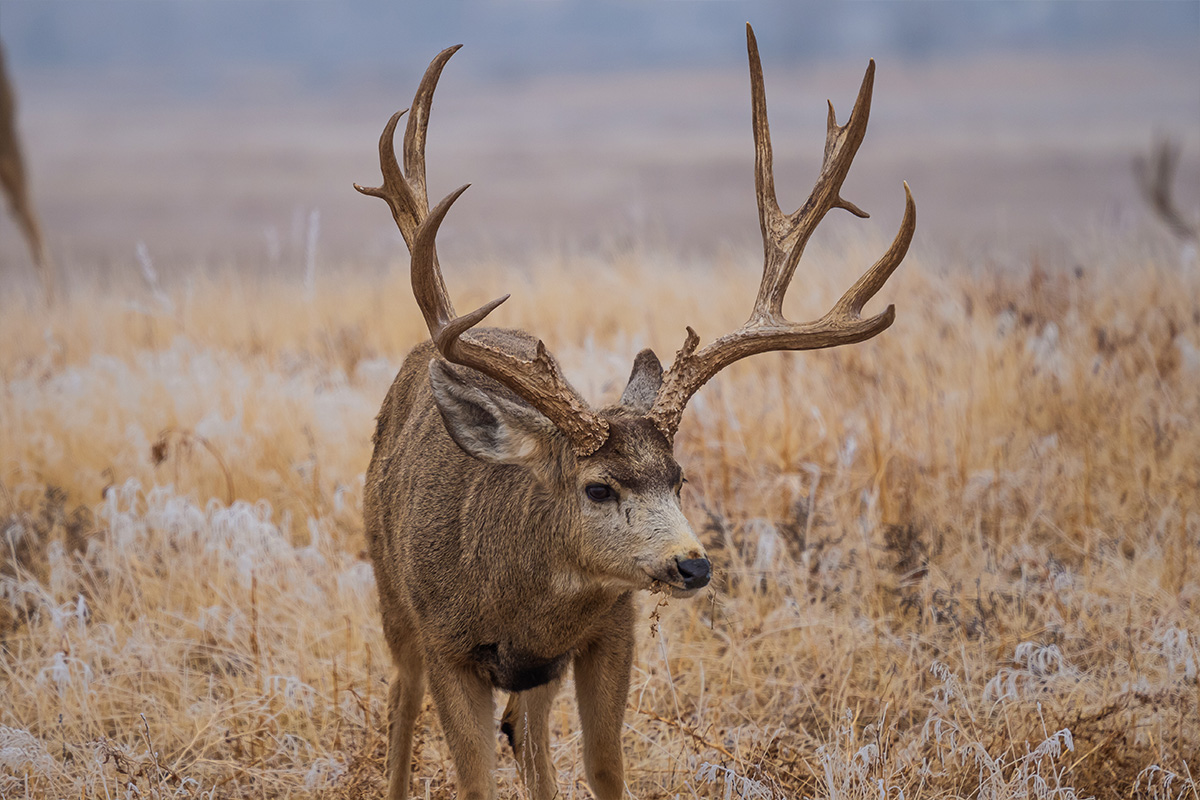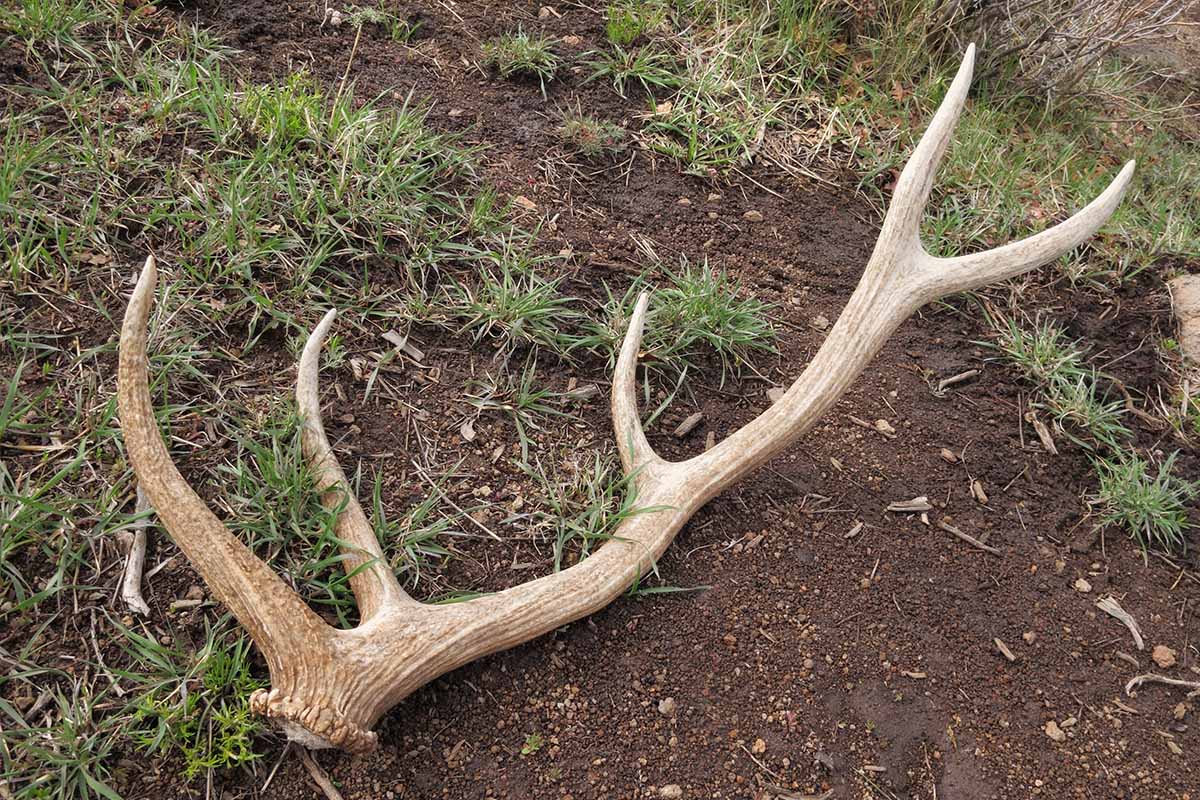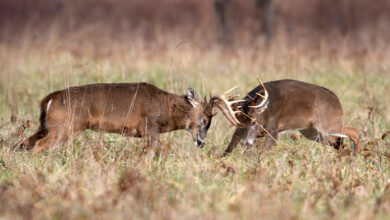The Ultimate Guide to Shed Hunting

I remember seeing a handsome buck with just a single rack of antlers for the first time as a kid. Then the mystery of the deer shedding their antlers and growing new ones every year was explained to me by my grandfather.
As shed hunters, we act as nature’s waste collectors and search for these dropped antlers during late winter and spring. Moving into the woods and learning more about the deer can make you a better deer hunter as well.
If the idea attracts you, you will be wondering “ how do I shed hunt?”
Learn some of the best shed hunting tips with Owen Reigler in this recent episode.
What is Shed Hunting?
Shed antlers are the antlers that deer and elk drop between late winter and early spring. These dropped antlers are “sheds” that have been used by humans since prehistoric times for making tools. Modern-day shed hunters use antlers in various decorative ways.
The antlers of a male whitetail deer or a buck start growing between the spring and summer months. In whitetails, the daily growth rate can be incredibly fast – around a quarter of an inch.
The fact that deer shed their antlers every season is news for many people. And most overlook the amazing biology behind this process.
Why Do Deer Shed Their Antlers?
In short, this dramatic process is a game of hormones and deer genetics. As the testosterone levels in the buck rises, the antlers start to harden up. The hardening process starts in July and peaks in late October and early November, in tune with the hormone levels. This matches with the breeding season.
After breeding, the testosterone level in the buck’s body drops and the outer layer of the antlers that contain skin and blood vessels starts drying up.
The bony foundation called pedicles, from which the antlers grow, remains unchanged. Ultimately the antlers fall off in winter and the growth cycle is repeated.
Note that the duration of light exposure or photoperiod affects the testosterone levels in deer. The genetics of the deer and its diet also play an important role in the shedding process. A deer surviving on poor nutrition is likely to shed the antlers in early winter.
When it comes to mule deer vs whitetail deer, their antlers are different. Since the elks are larger than mule deer and whitetail deer, their antlers are heavier and larger. However, the graceful shape and sweeping arcs of mule deer antlers make them a popular choice too. The antlers of whitetails are shorter in length and lighter in color.

Timing Your Shed Hunt
Timing your shed hunt is critical as you do not want to be too late or move in too early. If your spot is public land, there can be a fair amount of pressure on it.
Too many human signs around the property will mean that someone else will collect the antlers first. Not to forget, mice, squirrels, and porcupines love to chew on antlers because of their nutrient content.
Then again, you cannot hunt for sheds if the ground is covered by a blanket of snow. However, light snow can work in your favor as you can spot the deer tracks and find their wintering grounds.
If the parcel of land you are targeting is smaller, say under 100 acres, you can start late. Starting too early in such lands can make the deer move to a different property.
Both for whitetail and mule deer, the breeding season can last till December. Generally, the shedding process can begin a month or two after the rut. In most states, the best times for shed hunting are late winter and early spring.
Deer in a better habitat with more food sources will have healthy antlers. In most cases, such bucks will shed later than those living in poorer habitats. For example, in a plot surrounded by agricultural land, the shedding period can last between January to mid-March. I have also heard reports about injured bucks shedding their antlers early.
In the northeastern and midwestern states, the bucks tend to drop their load by the start of March. In some Southern and Midwestern states, the deer rutting season for some herds can be in late December and mid-January.
So these male bucks hold on to their antlers longer than their Northern counterparts. You can expect most bucks in southern states to drop their antlers by the first week of April.
In states like Texas, you might find shed antlers all year round due to the lack of rainfall. Also, the rodent population is less in these areas due to the high number of coyotes. However, I am yet to see a shed collected off-season but not bleached white by the sun.
Weather and Seasonal Factors
There is no clear scientific evidence that weather patterns affect the timing of antler shedding. Since antler shedding is closely related to deer genetics, a mature buck will shed its antlers at the same time every year.
That said, a brutal winter and lack of food in a region can stress the deer and affect their testosterone levels. This may cause them to drop their antlers early. Likewise, milder temperatures and easier winters can make them hold on to their antlers for a little longer.
Preparing for a Shed Hunt
When it comes to shed-hunting clothing, it is best to choose neutral colors with an earthy tone. Stick to the basic layering principles, starting with a breathable inner layer and adding more insulating layers on top. Pick the layers depending on the temperatures.
A lightly insulated and waterproof jacket or parka over hunting pants should work well in moderate conditions.
Here is a quick look at some of the essential gear for shed hunting.
Rugged Footwear: You will need tough hiking boots, preferably ones with a waterproof lining. In early spring, choose moisture-wicking wool socks to keep your feet comfortable. If you are planning to move through deep snow, consider packing snow shoes.
Backpack: A durable, lightweight backpack with a water-repellent coating is a must to carry all the stuff you will need during a day of shed hunting. The size will depend on the amount of gear you need to carry.
Binoculars: A binocular with good magnification will allow you to glass prospective areas like far-off fields. The key is to balance the optical performances like resolution and image quality with the mechanical performance.
Insect Repellent: My personal experience with ticks is nothing short of disgusting and I suggest carrying a Permethrin spray to repel them. Make sure to spray it on your clothes and backpack and not on your skin.
Antler straps: You can use special leather straps to carry the antlers or use utility straps to secure them to your backpack.
GPS: Carrying a GPS not only helps you to find the way but also allows you to mark the spots where you find sheds. This data can come in handy while tracking deer in the hunting season. You can also use a hunting app on the GPS for better guidance.
Emergency Gear: Carry an emergency kit with a battery bank, a headlamp, a firestarter, a paracord, and emergency medical supplies.
Finding the Right Locations
The first step for antler hunting is to scout the potential areas and check for deer tracks, droppings, or back rubs.
Using trail cameras can help you to narrow down the search zones and get the timing right. For me, the key to finding sheds is finding the deer feeding zones. Even so, there are a few other pointers to keep in mind.
Check South Facing Slopes
Since south-facing slopes receive the most sunlight in winter, these are spots where the bedding areas will be. Slopes with pine and cedar thickets provide great thermal cover for deer. In winter, deer will conserve energy and spend a lot of time in these spots. If there are any leftover acorns on these slopes, they can be wintertime buck magnets.
Identify Food and Water Sources
These are some spots where I have found the maximum sheds. Check around fruit and nut trees, agricultural fields, and cornfield edges. Water sources near the bedding and feeding areas are great places to look.
FollowTravel Routes
Without the thick foliage to cover them, deer trails are easier to identify in winter. Usually, these trails connect the bedding and feeding areas with the water source. The chances of finding sheds along these deer traffic routes are higher.
Check Elevation
In mountain terrain, deer will not prefer higher altitudes as those spots have deeper snow cover and stronger wind speeds. Most deer sheds are found in elevations below the 1500-foot mark. If the winter is harsh, the deer might pick bedding spots below 1000 feet to seek warmth.

Shed Hunting Strategies
Here are some proven deer shed hunting strategies that I have gathered from the veterans.
- Do not let the competition push your hunt ahead of time. Keep scouting and look out for some half-racks or a few bald bucks. Then, it is time to go. That said, do not overthink about the timing. In truth, the more you head out, the more sheds you will find.
- Shed hunting with friends and family is not just a ton of fun, but with more eyes on the ground, the chances of spotting sheds go up. Whoever spots the shed can keep them.
- Using maps to grid search a property sounds great in theory. But in reality, scouting the ground for bed-to-food tracks and following those patterns can be more productive. Even if you find the bedding zones empty in late February, you might find sheds in the same spot in March.
- Remember that shed hunting is not a race. Slow down and allow your brain to process the surroundings. Staying focused and looking in every direction instead of moving hastily is the best approach.
- Restrict your vision to a limited range instead of looking all over the landscape. If your bow range is within 30 to 40 yards, that should be the ideal scanning range.
- Lastly, do not make the mistake of leaving the binoculars at home. Mistaking a distant dry branch for an antler can be wasteful in terms of time and energy.
Final Thoughts
While shed hunting may not give you the thrill of actual hunting, it is an excellent off-season outdoor activity. Be warned – it is not an easy pursuit as success depends on a lot of factors. And just like hunting, patience is the key.
Whether you are a first-timer or a pro, it is necessary to follow ethical practices and respect the wildlife when you are in the woods. The idea of shed-hunting is to have a great time in the woods and not to disturb the deer population.
Time to start preparing for a sweet haul of sheds.


